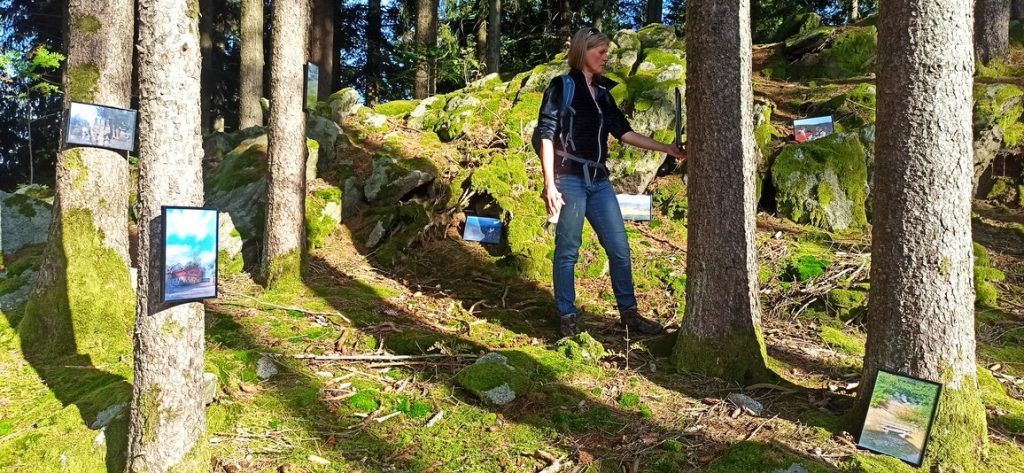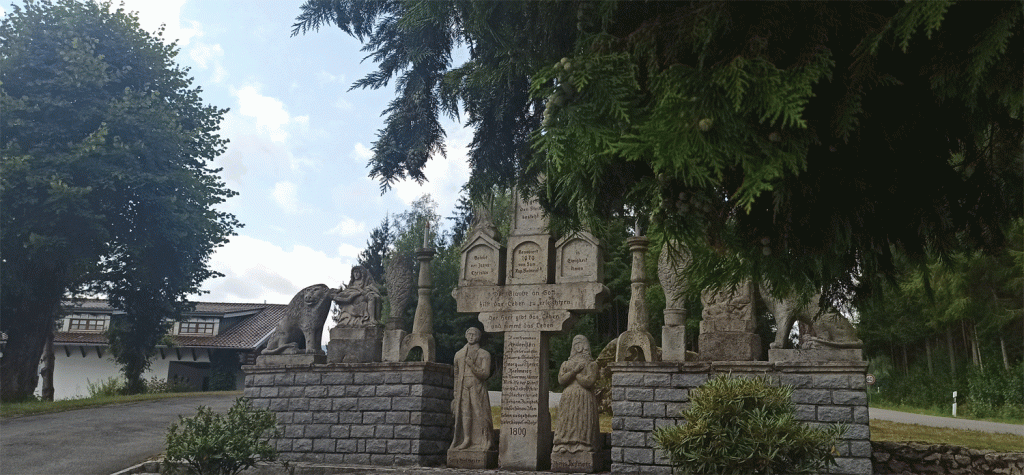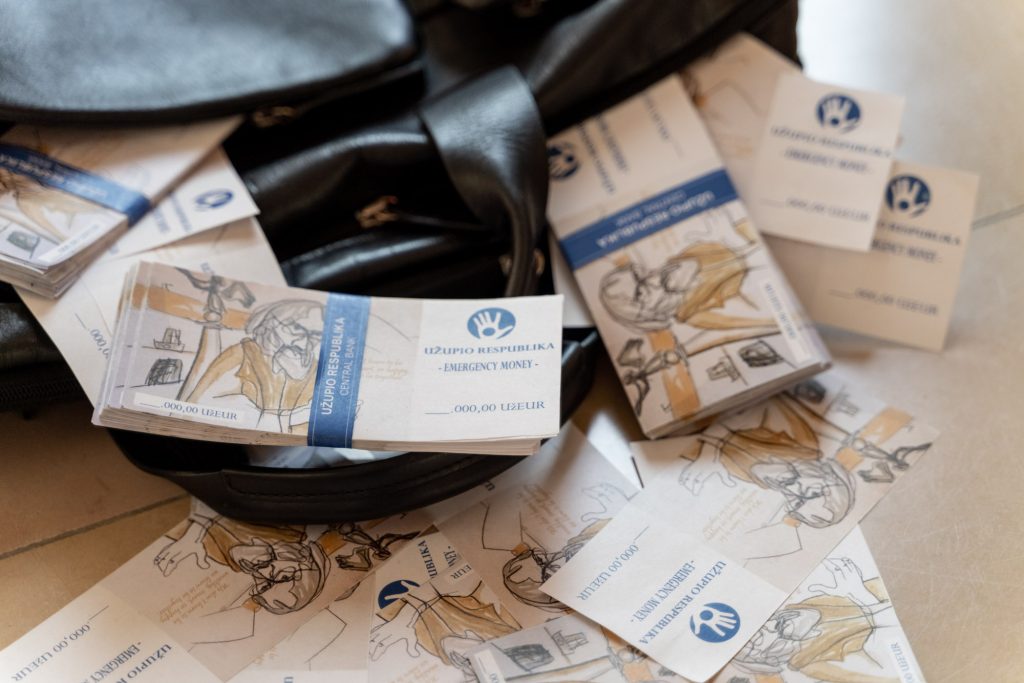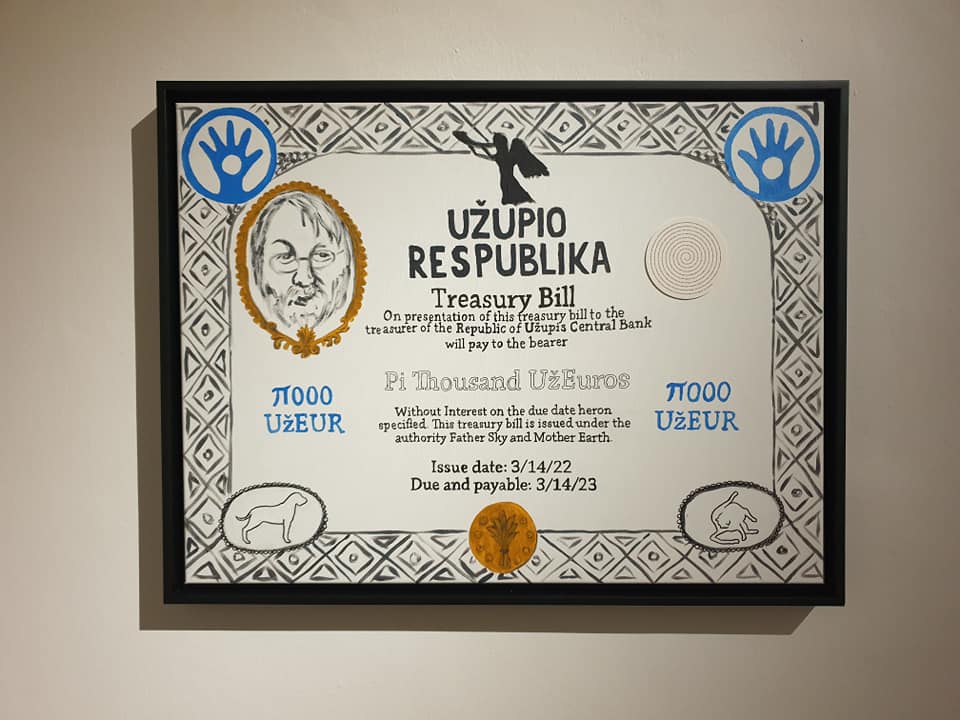by Max Haarich & Gleb Divov
The temporary gallery “Dawn of the Metaverse” offers a glimpse into the world of NFT-based digital art as well as an outlook on the technological possibilities of Web 3.0 and the social vision of the metaverse.
The term “metaverse” originates from the science fiction novel “Snow Crash” by Neil Stephenson” and describes the idea of completely virtual parallel worlds created by hackers, into which we humans can enter more and more immersively. Today, the term metaverse is applied to a variety of 3D digital architectures created by artists, Decentralized Autonomous Organizations (DAO), and even global sporting goods corporations. Many metaverses seem visually outdated compared to current computer games, but technological advances are enabling increasingly realistic experiences through increasingly complex online interaction capabilities but also through increased physical experiences e.g. through haptic feedback. Currently, the most important driver of the metaverse concept is probably the link with blockchain technology. It enables the convenient management of online profiles, but most importantly, it allows digital property to be claimed and traded in the form of NFTs.
For the temporary gallery “Dawn of the Metaverse”, we choose five digital artists each to highlight different aspects of metaverses with NFT-based works. For example, they address questions such as: What are metaverses? How are they created? What are they made of? What do they mean for us as people and society?
Artworks
Gleb Divov’s work “Messier 87” provides the cosmic reference frame of the metaverse concept. His work uses NASA sound data of the black hole “Messier 87” to create a visual image that is superior in detail to most optical representations. This work, for one, puts the visual focus of most metaverse projects into perspective. However, the world consists of more than light waves and metaverses offer the possibility to integrate further information into our visible architecture. At the same time, the work shows with what great degree of imprecision and ignorance we still face our own universe, while we are already trying to build universes or metaverses ourselves. His second work “Feel the artificial thought (triangle)” is an animation of digitally generated image motifs generated with artificial intelligence: one recognizes the fluid transition from heart to brain and/or vice versa. The work shifts the focus to the constitutive role of the visitor of the respective metaverse. The potential of the metaverse technology is presented as a function of the physical and mental constitution of the visitor, whose active participation appears as an indispensable prerequisite of the metaverse.
From artist sp4ce we show “Tile #20 (“Decentralized Mona”)“, which is part of an international collaboration project. The work proclaims the dilution of classical notions of value in the realm of art and culture. Instead of historical provenance, short-term crypto-financial usability now counts. The face of the Mona Lisa is obscured by the logo of the cryptocurrency Bitcoin. The brand symbol has the function of sunglasses at the same time and is a fashion accessory actually traded as NFT for avatars in the metaverse. Culture consumption becomes consumer culture.
Betty Menu’s works “VORTEX SKYTRIAL #1” and “Vortex // WaterMovement” draw the viewer into a vortex of visual stimuli that must be deciphered. These video loops allude to the tension between attractiveness and aloofness of the artificially created metaverses. The optical impressions invite the eyes to rest, while the partly synthetic partly natural parts urge constant reinterpretation. This attempt, however, comes to nothing and gets lost in the infinity of repetition. This addresses a constitutive difference between real and virtual worlds: while we can examine the real world ever more precisely and accurately, the virtual world is limited by computing power, at which point the immersive experience ends.
Max Haarich’s work “Urinal” is a teletext page mined as NFT that was broadcast on SAT.1. The urinal, rendered in clearly digitized 7bit graphics, references Duchamp’s work “Fountain.” Just as Duchamp showed over 100 years ago that anything can be a work of art, NFTs today show that anything can be a digital asset – even a teletext page. His second work, “It’s Love O’Clock“, is a charity NFT for Ukraine. It is a special edition “pixel chronometer” a collection of binary, trinary, quaternary and quinary coded timepieces consisting of only a few pixels. This collection is an experiment on the metaphysics of the metaverse. It shows how a fully functional timepiece could look like, in a world where energy and information are ubiquitous, and material and dimensions are only fiction. This special edition is binary coded in blue and yellow and starts every full hour with the red letters “LV” as a reminder that love is the strongest weapon.
From the CryptoWiener we show on the one hand “Oida!” from the series “Pixelrebellen”. In the animation, which is only a few pixels in size, a figure can be seen raising a sign with the inscription “Oida“. The figure invites you to emulate her without copying her. It offers a template, a model to become active oneself. This image manifests the revolutionary spirit of many NFT communities, who are currently trying out new ideas of society both in reality and in metaverses. That these speculations and explorations do not run in isolation from each other is evidenced by CryptoWiener’s second work, “The Fluffy Krapfen“. This 3D rendering of a very roughly pixelated doughnut is mined as an NFT. The owner of the NFT not only receives the rendering, but also five doughnuts from a Viennese bakery every Shrove Tuesday for life. This work reminds us that every virtual metaverse always exists in a real universe and should be developed as an extension rather than a competition to each other.
Tatjana Lee’s works “Meta Reality Genesis” and “Evolution Cycle: New Horizons” specifically use optical illusions to create physically non-existent images. Her two works embody the essence of the immersive experience in the metaverse. Without leaving our physical world, the works allow us to open a second level of experience created solely by our minds and only for us individually. Everyone can reach this level, but no one can meet on this level. Are metaverses in the sense perhaps also anti-social worlds, which only pretend a community? How much sensuality does the belief in a shared reality require? The two works play with the dualism of body and mind and their constitutive role for our experience of reality. While in “Meta Reality Genesis” a human face is turned into the perceptual matrix of the universe, in “Evolution Cycle: New Horizons” the infinite flow of passing clouds becomes the input factor of the just created private reality.
Michael Förtsch uses Artificial Intelligence (AI) to create his works. AI is also a very relevant technology for Metaversen because it solves a scalability problem: the more metaverses there are, the more needs to be created and designed. Artificial intelligence will in the long run be able to create complete worlds starting from a simple voice command. Michael Förtsch’s work can be seen here as a test of this creative power, not only from an aesthetic point of view, but even more from a semantic perspective: Does an AI understand humans well enough to be able to design on our behalf? This is tested in the work “Am I non fungible?” while his work “Portal to Another World” is asking in a different direction: Does AI understand who we are, what makes us tick, and what a desirable new world for humans would look like?
Primal Cypher focuses on the political and social aspects of metaverses. In an aesthetic that seems to echo the progress-propagandist comics of the 1960s, he draws motifs that are at the same time decorative paintings and activist pamphlets: “DON’T LET THEM CONTROL YOU!” is a clear warning against the power of technology. The more we use it, the more usable we become. His second work “THE GREAT DESIRE (unique Satoshi Tribute Edition)” is additionally a warning against ourselves, against our desires and cravings, with which we gain pleasure in the short term, but surrender to ruin in the long term, if we don’t find the right balance.
Juliane Kahl Devotes herself to extended meaning of fashion and clothing in the metaverse. In the metaverse, no one wears just anything because he or she is cold. Every piece of clothing thus has an even stronger effect as a statement. The work “Ukrainian Fashion XR” goes one step further. The 3D model of a Ukrainian costume is not only a visible sign of support for Ukraine, it is the support itself. Via smart contract, sales commissions are automatically donated to aid organizations: Wearing is caring. Her second work “Data Enabled Short Range Mobility – DESRM – Speculative Sound of the City” illustrates the new freedom and expanded creative space in the metaverse, which is no longer subject laws of nature. In such metaverses, shoes do not make physically determined sounds either. How a shoe sounds becomes a conscious decision and at the same time a personal identifier worth protecting.

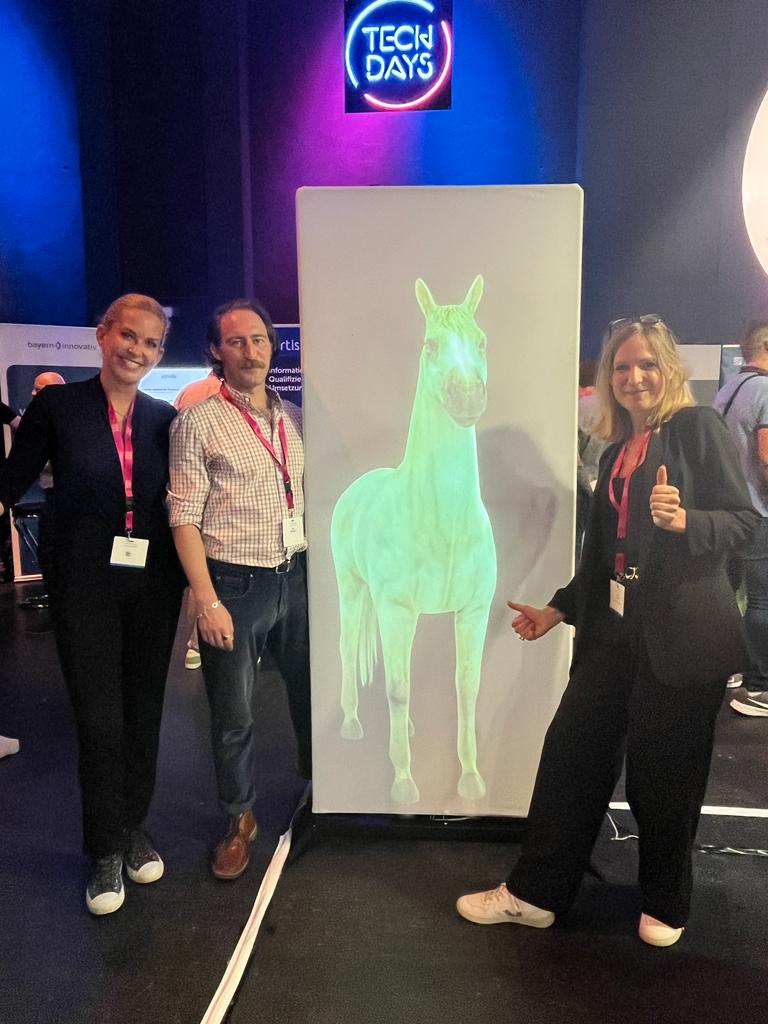
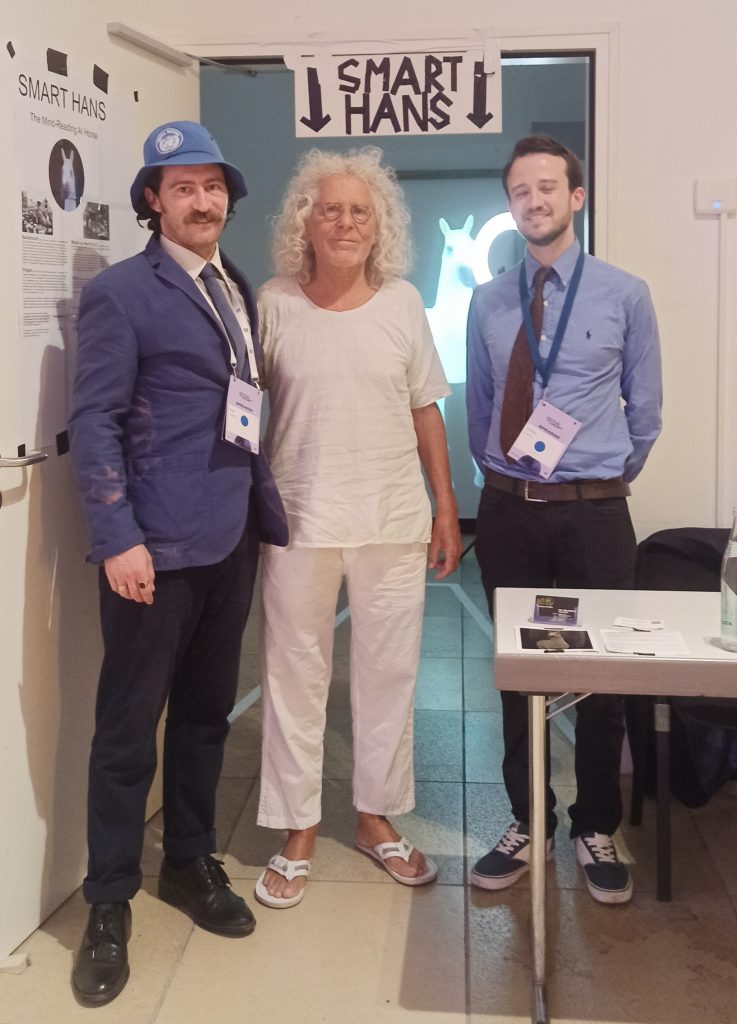
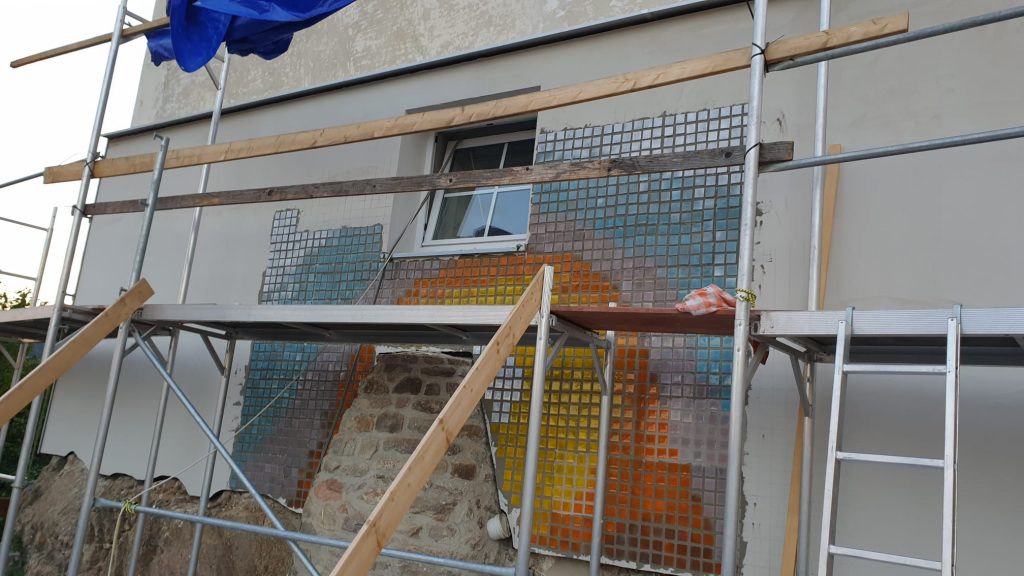 “Sunrise Over the Rocks of Kollnburg” is a 4×3 m outdoor mosaic created by the Hungarian painter Muzsa and H.E. Max Haarich. The work was commissioned by the village Kollnburg in the Bavarian Forrest. It shows a stylized sunrise on the facade of a historic building at the marketplace of Kollnburg. The glass mosaic incorporates the historic bricks and stones, which actually belong to the rock on top of which Kollnburg was erected.
“Sunrise Over the Rocks of Kollnburg” is a 4×3 m outdoor mosaic created by the Hungarian painter Muzsa and H.E. Max Haarich. The work was commissioned by the village Kollnburg in the Bavarian Forrest. It shows a stylized sunrise on the facade of a historic building at the marketplace of Kollnburg. The glass mosaic incorporates the historic bricks and stones, which actually belong to the rock on top of which Kollnburg was erected.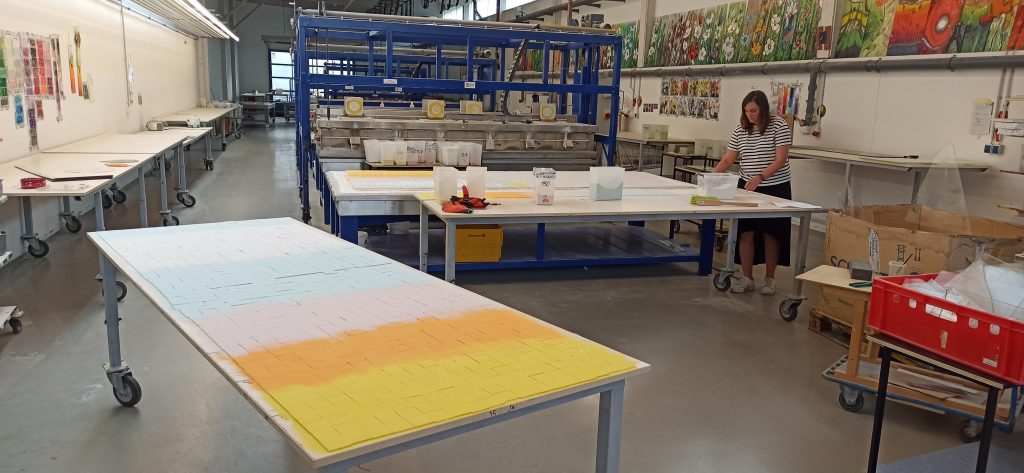
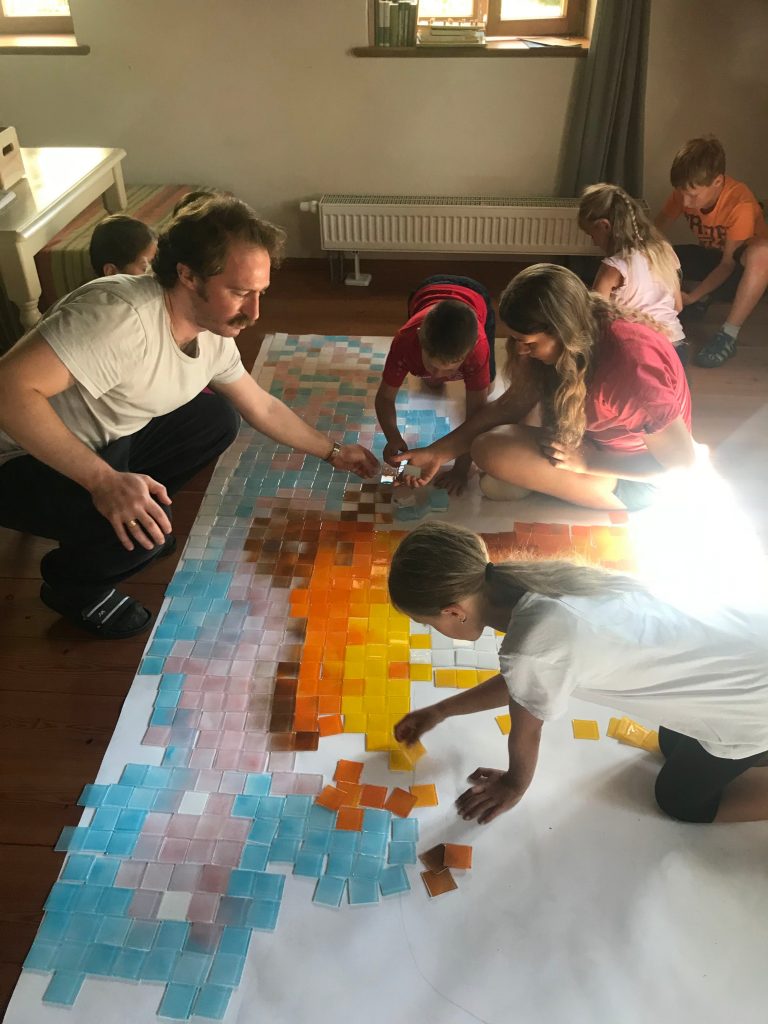 Mosaic art is actually a predecessor of modern pixel art and it was a lot of fun to practice “pixeling” motifs by hand with the prepared glass tiles.
Mosaic art is actually a predecessor of modern pixel art and it was a lot of fun to practice “pixeling” motifs by hand with the prepared glass tiles.